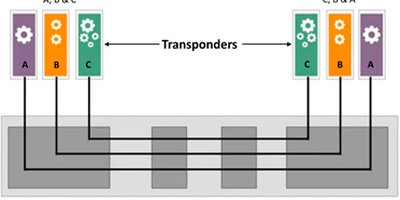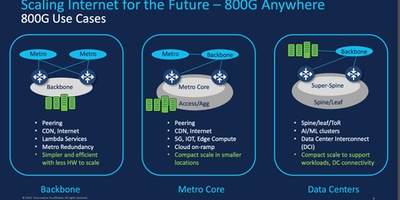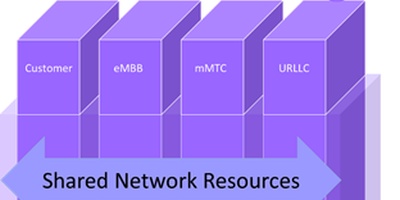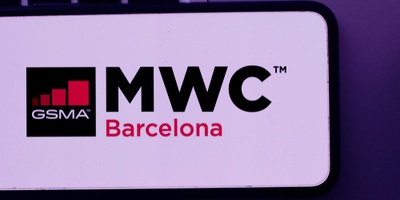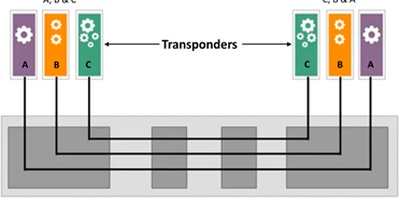
Providers are responding to consumers’ demands by updating their networks, migrating to new technology and changing business models
Video distribution and consumption are going through a profound transformation. Consumers increasingly are “cutting the cord” or “shaving the cord” as they seek content from a variety of new sources. Users increasingly expect to consume the content of their choice, at a time and location of their choice, and on a device of their choice. Consequently, the Multichannel Video Programming Distributors’ (MVPDs) businesses are being disrupted from multiple angles. Video consumption is growing exponentially and is increasingly moving to IP. Parks Associates reported that U.S. broadband households watch an average of 3.8 hours of Internet video on TV screens weekly, accounting for 20% of all video viewed on TV sets.
In addition to the traditional competitors, MVPDs are facing new and emerging competition, including OTT providers, direct to consumer content distributors, skinny bundles, and a plethora of other business models. To be sure, they are experimenting with new business models themselves; note Verizon’s Go90, Comcast’s Xfinity X1, Dish’s SlingTV, to name but a few.
To meet the new demands on their networks, cable companies have embarked on a multipronged strategy to evolve their infrastructure. They have started to roll out DOCSIS 3.1, which promises download speeds in excess of 1Gb/s, and enables them to compete with the telcos and with Google Fiber. Comcast expects DOCSIS 3.1 to be rolled out to their entire footprint within two years. With the proliferation of smart TVs and with video being consumed on customers’ CPE, some MVPDs are experimenting with apps that essentially act as a virtual STB. One small operator, C-Spire, has moved completely in that direction, eliminating the STB entirely.
These drivers will over the long term contribute in the decline of capex spend on STBs (and associated rental revenue). For now, the imminent death of the STB is greatly exaggerated. Consumers have to deal with too many apps and need help navigating all the available content. Some new players, such as Reelgood, and possibly Apple, are emerging to help the discovery process, acting as next- generation aggregators.
On the network side, the migration to DOCSIS 3.1 combined with the growth of IPTV are driving MSOs to bring together what were traditionally two disparate parts of their networks: EQAM for video delivery and CMTS for data, thus their adoption of CCAP (converged cable access platform). As they move to a CCAP virtualized architecture, MSOs are exploring how to leverage the inherent distributed nature of the CCAP to move some (or all) of the CCAP/CMTS functionality from the headend to a remote location, such as the Fiber Node, which is deeper in the network and closer to the customer. Among the many benefits of such an approach are increased performance and capacity and reduced power consumption. Most operators are adopting a remote PHY approach, which involves moving the remote PHY from the headend to the node. Other options involve moving more intelligence to the node (for example, remote MAC-PHY); some operators are exploring such an approach for the longer term. A vendor that has gone this route is Gainspeed, which was acquired by Nokia in June 2016.
Another imperative for MSOs is wireless. Although they have built a huge WiFi presence, they still lack a true wireless capability, putting them at a disadvantage with respect to the telcos. Comcast is planning to launch an MVNO, leveraging an option they gained when they sold their spectrum to Verizon. However, is the MVNO a long-term strategy for Comcast or a way to “learn the business” and then explore other options such as build-out or M&A?
These are just some of the imperatives that are driving increased capex for MSOs, at least in the near term.
On another front, the service delivery model that has worked well for MVPDs in the past, namely the bundle, is increasingly under pressure. A number of new models are being tested in the marketplace, including skinny bundles often delivered OTT; direct to consumer content; SVOD; TVOD; ad supported video-sharing; and others. It will be some time before the market settles on a new direction. It is hard to see how direct to consumer models will win, except perhaps for niche content. They will end up costing more, at least in aggregate, and in the end will make for a poor user experience. There is still room for an aggregator role or for another way to enable the discovery process. However, the large rigid bundle no longer serves the needs of an increasingly dynamic market. Skinny bundles are being offered with some success thus far. Will more dynamic or better customized skinny bundles be a winning alternative?
What MVPDs have, which is very valuable, is data, and lots of it. They also have the relationship with the customer. The STB has a trove of data, and as people watch online, more valuable data becomes available. Through machine learning, MVPDs can create predictive models that better capture customer viewing preferences and habits and offer better targeted and customized bundles or aggregated offers, combined with a user friendly UI or other discovery enablers such as apps. Not to mention how much more attractive this makes their advertising, which while evolving, is still lacking far behind web advertising. This is not an easy path for sure. Content providers hold a lot of sway, and MVPDs are bound by rigid and complex agreements with content providers (note the number of blackouts Dish faced during their retrans negotiations, which caused them to lose lots of subs). Armed with better data, MVPDs may gain more power with content providers. It is worthwhile noting that some MVPDs have recently dropped some content providers (for example, Viacom) from their bundle.
Significant consolidation among MVPDs has created operators with huge scale and better negotiating power. Will this lead to consolidation among content providers? Will the weaker players (for example, Viacom) be taken out? Will MVPDs be able to gain better flexibility in creating bundles or other offers that better suit the needs of the market place? Only time will tell, but in the meantime, consumers can enjoy a plethora of choices.
Click for more information about Liliane Offredo-Zreik.























